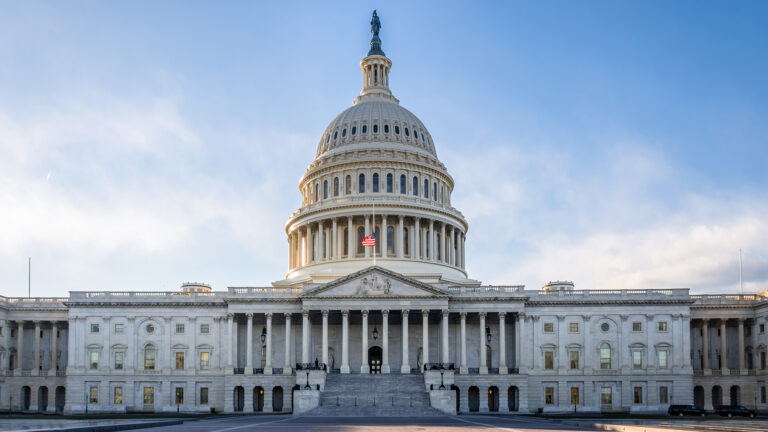How Family Offices Are Reshaping the Future of the Healthcare Industry: Part 2
Family Office Advisor Paul Simon discusses personally investing in pharmaceutical psychedelics to combat mental health issues.
By Kristen Oliveri
The nature of a single-family office has always been somewhat of an enigma to the overall financial industry. Private capital run by the world’s largest families often flies under the radar in terms of how they invest and the causes they support.
But today’s family office, run by many next-generation family members, is taking a different, mission-driven approach. Family offices can be deliberate in their investment strategies, utilizing creative, out-of-the-box problem solving to further their individual family’s mission.
Markets Group’s Kristen Oliveri, head of Private Wealth Content, sat down with three leading family office professionals to discuss the healthcare-related missions they are building out and what the overall impact may be.
Below is one family office advisor’s professional journey.
Paul GJA Simon, Investor and Family Office Special Advisor
London-based Paul Simon is a career family office advisor working with sophisticated, single-family offices globally on their impact portfolios. Throughout his time actively advising families, he’s come across unique investment opportunities that he has decided to invest in personally alongside other family office investors actively invested in the space. One such life science investment came about roughly four years ago when he decided to invest in pharmaceutical psychedelics to combat mental health issues.
“Mental health is something that I’ve been interested in for a very long time,” says Simon. “When I talk about psychedelics, I’m talking about what is typically referred to as classical psychedelics, so these are LSD, psilocybin (‘magic mushrooms’), mescaline and dimethyltryptamine (DMT). These, or closely related compounds, all occur in nature in organic form, but in the context of investing in them, they are typically synthetically made in labs.”
Crash Course in Psychedelics
Simon is quick to point out that psychedelics are used in a very different way than recreational drugs. “When you talk about recreational drugs be it caffeine, nicotine, alcohol—they work through dopamine and they are transmitted that way in the context of pleasure. Psychedelics in this context work through serotonin, a different pathway to the brain,” he says.
From a purely chemical perspective, says Simon, the toxicity of these compounds is miniscule. “There’s less toxicity in these compounds then you’ll find in a cup of coffee, and they are not addictive,” he adds. To date, there has not been in a single established case of overdosing on psychedelics in this context, explains Simon. Leading medical research being done on this type of treatment is being conducted at Imperial College of London and John Hopkins University in the United States, and to a lesser extent New York University (NYU). They are leading the charge with clinical trials and groundbreaking research on this specific type of mental health treatment.
The John Hopkins Center for Psychedelic and Consciousness Research is currently working on four ongoing studies as they relate to the usage of psychedelics for treatment with PTSD, alcoholism, depression and long-term treatment of Lyme disease. A call for comment to Johns Hopkins regarding the ongoing treatment was not returned.
One challenge regarding the actual psychedelic experience is not about the drugs, but around the experience that is done while working with therapists and qualified nurses, a very expensive treatment that wouldn’t be covered under insurance in the United States. The duration of trip experiences varies substantially between different compounds. For example, the LSD experience can take up to 12 hours, whereas DMT is 10 minutes, notes Simon.
Many of those actively invested in this are approaching it focused on how this type of treatment will help the veteran community in the U.S. who are suffering from mental illness and post-traumatic stress disorder (PTSD). “So, by working with this community and trying to find solutions for them, I think some of the political stigma has been diffused,” notes Simon.
The Investment Process
Simon often collaborates and co-invests with other family offices and individuals through formal investment networks and informal, personal relationships. “Much of my deal flow is sourced this way and provides a helpful initial due diligence screen,” he says.
In terms of specifically discussing his investments in psychedelics, he looks for sources/sponsors who have a deep understanding of life sciences and taking compounds through clinical trials. Simon conducts his own due diligence internally that follows a usual venture capital allocation process. “In cases where it’s difficult to assess the pharmacological aspect of the investment proposition, I pay particular attention to management track record and take extensive references and cross references,” he adds.
There are challenges, however, to early-stage investing in market verticals with multiple players, he admits, which is why he relies on the quality and track record of the management team as well as other investors involved. “In some instances, there is only one company working on a particular compound or indication. In such cases, I need significant conviction of the viability of the solution and the depth of the market in addition to the due diligence itself,” Simon notes.
The Market Opportunity and Challenges
“The investment case study is still largely unproven and the ecosystem itself is very much an evolution,” Simon says.
Investing in psychedelics is somewhat a double-edged sword. While these medicines have been used for millennia, the investment opportunity is still nascent, Simon admits. Realized track records are limited except for several high-profile IPOs, making it difficult to point to a consistent return metric. For Simon’s own portfolio, he expects a multiple of investment capital (MOIC) of three times or more, he says.
Risk factors in this field are many—with everything from execution risk to risks around the science, regulation, patents and long lead times to profitability and risks related to the overall market dynamics. Other challenges center around the most appropriate business and revenue models and what segment of the value chain may ultimately be the most attractive.
Simon understands his own personal risk and evaluates accordingly. “Though I expect appropriate risk-adjusted returns for these investments, I also believe that finding solutions to the mental health crisis is critical and imperative. I have a great deal of conviction in the importance of these compounds and see my investments as supporting the broader evolution of this market,” he says. “My risk tolerance may therefore be somewhat higher than what is typically the case. I like to think of this as my emotional hedge.”
Looking Forward
Simon feels strongly about changing the dynamic about the perceptions around utilizing psychedelics in a medical setting. “This brings an element of reputational risk and frequent need to explain the marketplace and the motivation for investing in it,” he says. “It’s critical that the narrative around this is managed carefully and professionally in order to avoid backlash against the industry.”
Investing in psychedelics today reminds Simon of climate change investing 20 years ago. Some investors are bringing to the space strong, emotional conviction, while others approach it from a pure life science venture capital angle.
“It will be very interesting to see how the industry manages this very broad spectrum of actors and the potential tension that may arise from it,” he says.
Stay tuned for our third installment of how family offices are reshaping the healthcare industry.












